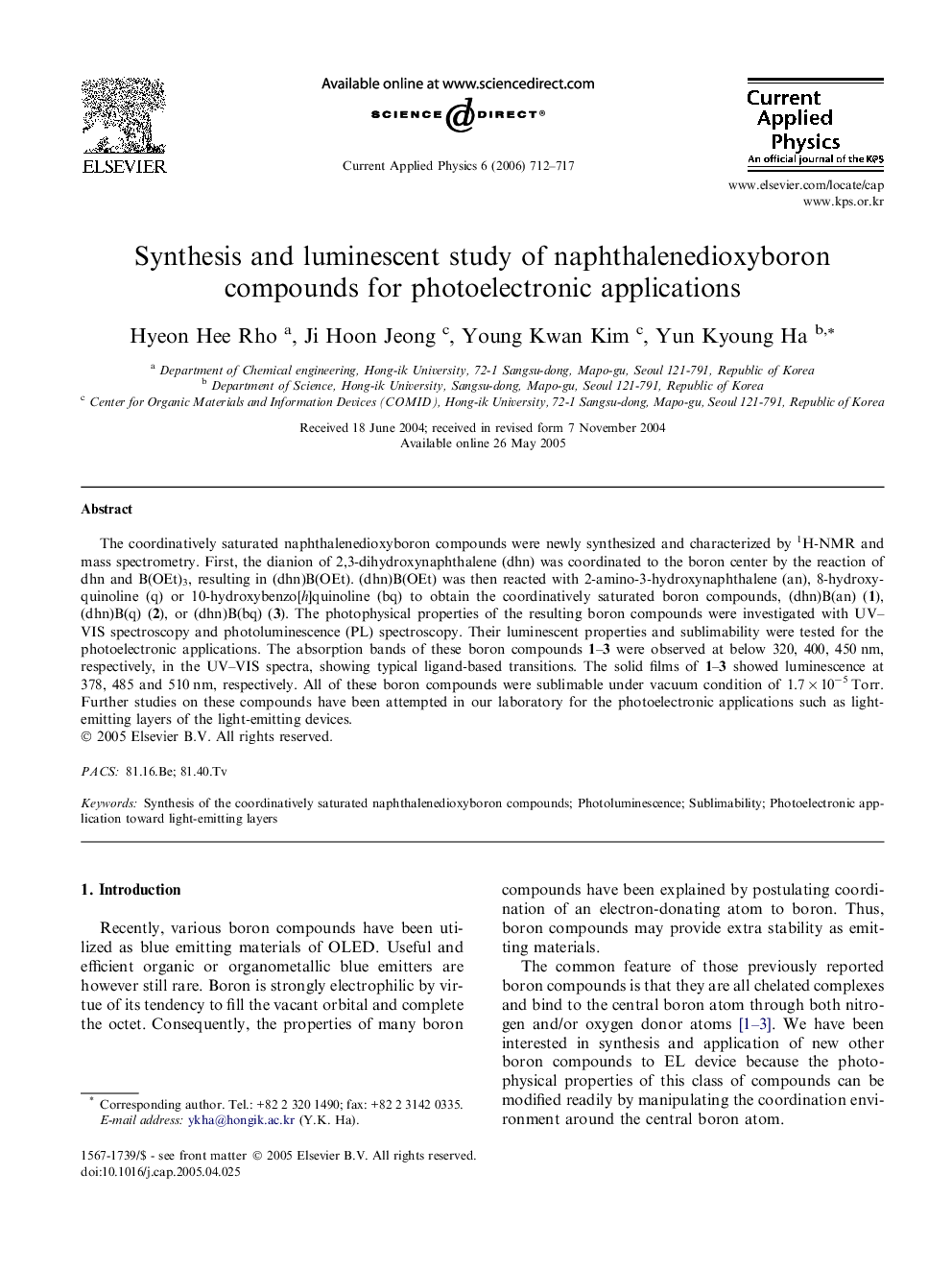| Article ID | Journal | Published Year | Pages | File Type |
|---|---|---|---|---|
| 1789192 | Current Applied Physics | 2006 | 6 Pages |
Abstract
The coordinatively saturated naphthalenedioxyboron compounds were newly synthesized and characterized by 1H-NMR and mass spectrometry. First, the dianion of 2,3-dihydroxynaphthalene (dhn) was coordinated to the boron center by the reaction of dhn and B(OEt)3, resulting in (dhn)B(OEt). (dhn)B(OEt) was then reacted with 2-amino-3-hydroxynaphthalene (an), 8-hydroxyquinoline (q) or 10-hydroxybenzo[h]quinoline (bq) to obtain the coordinatively saturated boron compounds, (dhn)B(an) (1), (dhn)B(q) (2), or (dhn)B(bq) (3). The photophysical properties of the resulting boron compounds were investigated with UV-VIS spectroscopy and photoluminescence (PL) spectroscopy. Their luminescent properties and sublimability were tested for the photoelectronic applications. The absorption bands of these boron compounds 1-3 were observed at below 320, 400, 450Â nm, respectively, in the UV-VIS spectra, showing typical ligand-based transitions. The solid films of 1-3 showed luminescence at 378, 485 and 510Â nm, respectively. All of these boron compounds were sublimable under vacuum condition of 1.7Â ÃÂ 10â5Â Torr. Further studies on these compounds have been attempted in our laboratory for the photoelectronic applications such as light-emitting layers of the light-emitting devices.
Keywords
Related Topics
Physical Sciences and Engineering
Physics and Astronomy
Condensed Matter Physics
Authors
Hyeon Hee Rho, Ji Hoon Jeong, Young Kwan Kim, Yun Kyoung Ha,
